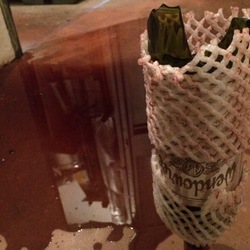Sauvignonasse
Klet Brda
Nina Nunić Sauvignonasse 2020
Sauvignonasse from Slovenia. Old 2020. — 4 years ago
Colliano
Sauvignonasse 2013
Unctuous and pretty. Banana and peach marmalade. Rich and gelatinous on the palate. All that but dry and delicious. — 9 years ago
Livon
Collio Friulano 2022
With Tocai you can hardly go wrong
Always very easy drinking
Tocai friulano is known as sauvignonasse as well and sometimes it is very sauvignon like, very sauvage. This is one of those cases.
Not my favourite expression of it, but absolutely true to one of its vest — 2 years ago
Dario Raccaro
Collio FRIULANO (SAUVIGNONASSE) 2019
Better Raccaro than the last few times I’ve had it. Has the clear character of Friuli — 4 years ago

Salko & Marjan Simcic
Sauvignonasse
4th wine in pairing at Venissa — 8 years ago
Blazic
Jakot Sauvignonasse 2019
Tasty! With apricot, white flowers, herbs, and honey. — 2 years ago
Vinska Klet Goriška Brda
Krasno Goriška Brda Sauvignonasse 2019
Skin contact white made from Ribolla Gialla (Rebula-40%), Malvasia (30%) and Sauvignonasse (30%). Dark golden color. (Not quite an orange wine). Aromas of apricot, quince and mango fruit. Pallet features more peach, green apple and pear. Hints of dried herbs and limestone and nuts. Chalky texture. A touch of tannin and a pleasant bitter aftertaste. Medium bodied. — 3 years ago
Vinska Klet Goriška Brda
Krasno Pinot Orange 2018
I love orange wine. 🧡 Better explained, I love wine made with white grapes that received extended skin contact (maceration) during the fermentation process. This extended skin contact deepens the color of the resulting wine and enhances the wine’s texture, tannins, and aromatics. Generally, the longer the maceration period, the greater its impact on the resulting wine. 👍
By contrast, a more typical white winemaking process would involve crushing and pressing the grapes off their skins, removing the skins and seeds, prior to fermentation. 👀
This technique of fermenting white wines “on the skins” derives from an ancient and traditional Georgian 🇬🇪 winemaking process of sealing whole, crushed grapes in a clay vessel – called a qvevri – that is buried underground to be kept cool for the period of fermentation, storage, and aging. When white grapes are used in this process, the result is an amber wine. 🙌🙌
The orange winemaking technique has now been adopted throughout the world, but some of my favorite examples come from Northeast Italy and Slovenia (neighboring regions). 🇮🇹 🇸🇮
My first experience with orange wine was in 2019 – clearly, I’m still a baby on this journey – dining at Restaurant Montcalm in Paris. I was captivated by the color, aromatics, and incredible food-pairing abilities of the orange wine we tasted with our first course, which was made from the Loire grape Melon de Bourgogne.
Whether it’s enjoyed as a solo sipper or paired with food, I so appreciate the versatility of these wines and am taking much pleasure expanding my orange-wine horizons. 😆😆😆
Here we have a Slovenian orange wine made from a blend of Ribolla Gialla (Rebula), Malvasia, Sauvignonasse, each of which were fermented and handled separately in different vessels and with use of a range of malolactic fermentation, lending richness and complexity.
This wine offers aromas and flavors of baked pear and apple 🍎 🍐 , lemon pith, orange peel, citrus and cherry blossom 🌸 , and wet slate. It has a rich texture and cream secondary notes. It’s lovely and hits the spot on this gorgeous spring evening. 🎯
Krasno, Orange, Vintage 2018, ABV 13%, from Brda, Slovenia. $19.00 at Lowry Hill Liquors. — 5 years ago







Jeremy Krantz
Really interesting Slovenian orange wine. 40% Robolla Gialla, 30% Malvasia, 30% Sauvignonasse. Fresh, ripe Turkish apricot on the nose and ever so slight viscosity, not too atypical of an orange wine. Not particularly sweet. Notes of honey, honeysuckle and cantaloupe. Pretty tasty. — 2 years ago